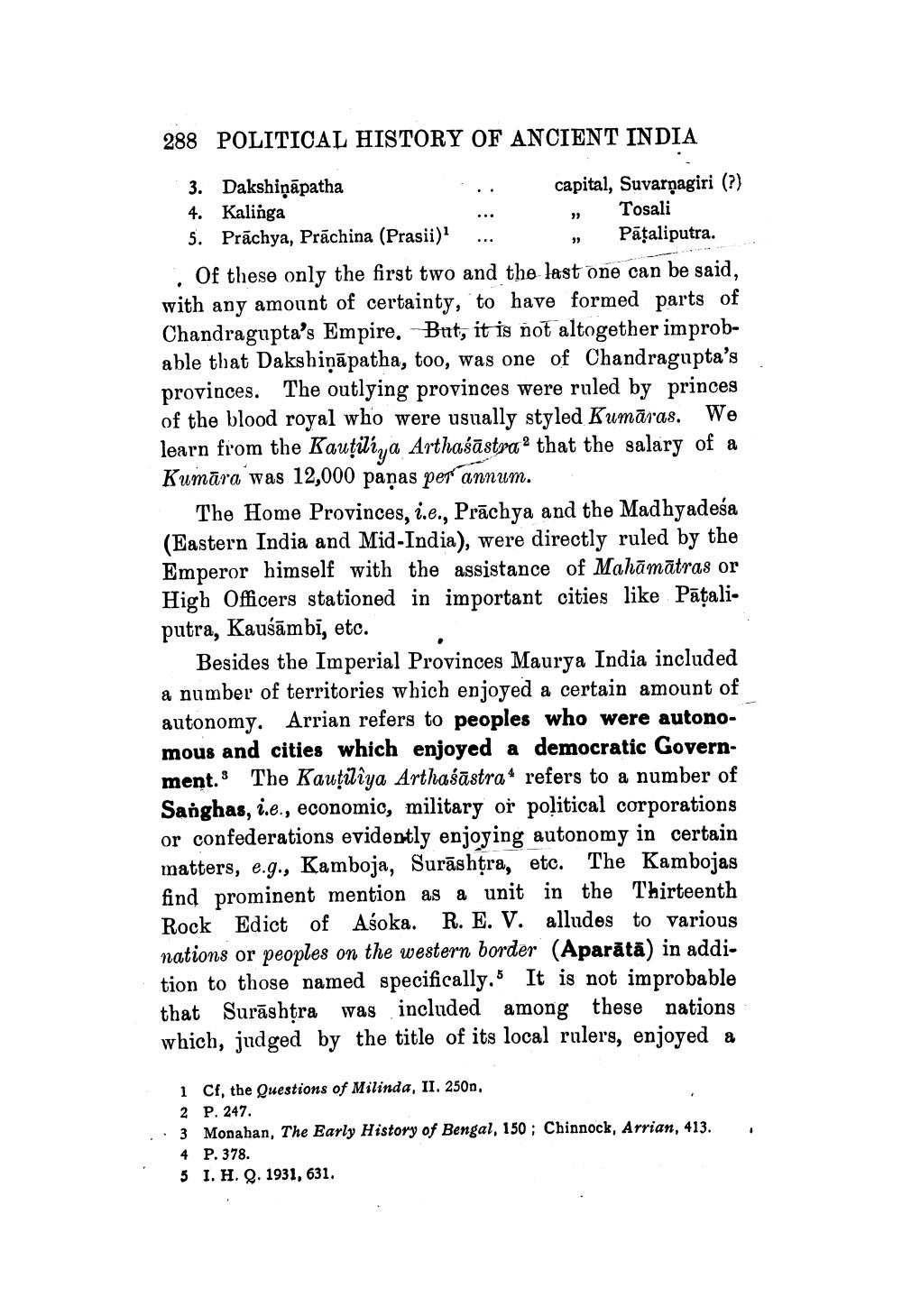________________
288 POLITICAL HISTORY OF ANCIENT INDIA
| 3. Dakshiņāpatha
capital, Suvarnagiri (?) 4. Kalinga
, Tosali 5. Prāchya, Prāchina (Prasii) ...
Pāšaliputra. : Of these only the first two and the last one can be said, with any amount of certainty, to have formed parts of Chandragupta's Empire. But, it is not altogether improbable that Dakshiņāpatha, too, was one of Chandragupta's provinces. The outlying provinces were ruled by princes of the blood royal who were usually styled Kumāras. We learn from the Kautiliza Arthaśāstrathat the salary of a Kumāra was 12,000 paņas per annum.
The Home Provinces, i.e., Prāchya and the Madhyadeśa (Eastern India and Mid-India), were directly ruled by the Emperor himself with the assistance of Mahāmātras or High Officers stationed in important cities like Pataliputra, Kaušāmbi, etc.
Besides the Imperial Provinces Maurya India included a number of territories which enjoyed a certain amount of autonomy. Arrian refers to peoples who were autonomous and cities which enjoyed a democratic Government.The Kauțălîya Arthaśāstra* refers to a number of Sanghas, i.e., economic, military or political corporations or confederations evidently enjoying autonomy in certain matters, e.g., Kamboja, Surāshtra, etc. The Kambojas find prominent mention as a unit in the Thirteenth Rock Edict of Asoka. R. E. V. alludes to various nations or peoples on the western border (Aparātā) in addition to those named specifically. It is not improbable that Surāshtra was included among these nations which, judged by the title of its local rulers, enjoyed a
.
1 Cf, the Questions of Milinda, II. 250n. 2 P. 247. 3 Monahan, The Early History of Bengal, 150; Chinnock, Arrian, 413. 4 P. 378. 5 I. H. 9. 1931, 631.




